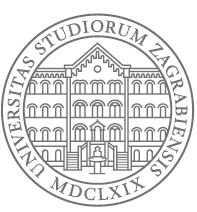Title Analiza stanja naprezanja i relativnih deformacija zidane zgrade Title (english) Stress and strain analysis of masonry building. Author Karla Grgić Mentor Ivan Duvnjak (mentor)Committee member Marija Demšić (predsjednik povjerenstva)Committee member Ivan Duvnjak (član povjerenstva)Committee member Mario Uroš (član povjerenstva)Granter University of Zagreb Defense date and country 2022-02-17, Croatia Scientific / art field, TECHNICAL SCIENCES Abstract Procjena stanja starih zidanih konstrukcija zahtjevan je zadatak s više nepoznanica. U ovom radu ocjenjuju se mehanička svojstva materijala ziđa i dinamički parametri zidane konstrukcije oštećene u potresu. Uvodno je prikazan pregled propisa za nosivo ziđe i primjeri eksperimentalnog ispitivanja mehaničkih svojstava ziđa u laboratoriju i na terenu. Zatim je opisana predmetna građevina na kojoj je obavljen vizualni pregled i provedeni istražni radovi. Oštećenje utvrđeno vizualnim pregledom potvrđeno je kontrolom osnovnih zahtijeva za nosive zidove. Temeljem dobivenih rezultata mehaničkih svojstava ziđa tijekom istražnih radova i preporučenih vrijednosti iz literature, izrađen je numerički podmodel karakterističnog nosivog zida. Numeričkim podmodelom, koji je ujedno korišten za inicijalni globalni numerički model, opisana su provedena ispitivanja i dobiveni su rezultati vrlo slični eksperimentalno određenima. Međutim, inicijalni globalni numerički model pokazuje nesigurnost eksperimentalnih rezultata. S ciljem podudaranja rezultata stvarnog ponašanja konstrukcije i numeričkog modela, uzimajući u obzir dinamičke parametre konstrukcije, proveden je cijeli niz iteracija. Obuhvaćene su sljedeće iteracije: promjena rubnih uvjeta, modeliranje pregradnih zidova, modeliranje oštećenja i promjena globalne krutosti konstrukcije. U odnosu na inicijalni numerički model, promjenom rubnih uvjeta na numeričkom modelu nisu dobivene značajne razlike vlastitih frekvencija konstrukcije. Zatim se pristupilo usporedbi numeričkog modela s modeliranim pregradnim zidovima i numeričkog modela s unesenom masom pregradnih zidova. Rezultat je bila veća frekvencija modela s modeliranim pregradnim zidovima zbog povećanja krutosti konstrukcije. Iduće iteracije obuhvatile su uvođenje oštećenja konstrukcije u numerički model. Oštećenja su početno modelirana smanjenjem modula elastičnosti konačnim elementima koji pripadaju oštećenim dijelovima građevine, no rezultati vlastite frekvencije konstrukcije nisu bili zadovoljavajući. Zatim se prema preporukama iz literature pristupilo oštećenja smanjenjem modula elastičnosti konačnih elemenata duž pukotina. Modelu sa smanjenim modulom elastičnosti konačnih elemenata duž pukotina u konačnici je promijenjena globalna krutost konstrukcije koja izravno utječe na vrijednost vlastite frekvencije konstrukcije. Temeljem navedenih pretpostavki uvedenih u globalni numerički model postignuti su zadovoljavajući rezultati vlastite frekvencije konstrukcije u usporedbi sa stvarnim ponašanjem konstrukcije. Stoga se globalni numerički model može smatrati povoljnim za buduću ocjenu stanja i izradu projekta obnove.
Abstract (english) Assessing the condition of old masonry structures is a demanding task with several unknowns. In this paper, the mechanical properties of the masonry walls and the dynamic parameters of the structure are evaluated for the masonry structure damaged by the earthquake. In the introduction, an overview of load-bearing masonry standards and examples of experimental testing of mechanical properties of masonry in the laboratory and in situ are presented. Afterwards, the building is visually inspected and an experimental investigation of the material properties is performed. The damage determined by visual inspection was confirmed by the control of the basic requirements for load-bearing walls. Based
on the obtained results of the mechanical properties of the masonry during the experimental investigation and the
recommended values from the literature, a numerical submodel of the characteristic load-bearing wall was made. The numerical submodel, which was also used for the initial global numerical model, describes the tests that have been performed. Obtained results are very similar to those experimentally determined. However, the initial global numerical
model shows the uncertainty of the experimental results. In order, to correspondence the results of the actual behavior
of the structure and the numerical model, considering the dynamic parameters of the structure, a whole series of iterations were performed. The following iterations are included: changes in boundary conditions, modeling of partition walls, modeling of damages, and changes in global stiffness of the structure. Compared to the initial numerical model, changing the boundary conditions on the numerical model did not result in significant differences in the natural frequencies of the structure. Afterwards, a comparison of the numerical model with modeled partition walls and the numerical model with the entered mass of partition walls was performed. The result was a higher frequency in models with modeled partition walls due to the increase in structural stiffness. Following iterations included the introduction of structural damage into the numerical model. Damage was initially modeled by reducing the modulus of elasticity of finite elements that belong to the damaged parts of the building. The results of the natural frequency of the structure were not satisfactory. Afterwards, according to the recommendations from the literature, the damage was modeled by reducing the modulus of elasticity of finite elements along the cracks. The global stiffness of the structure of the model with a reduced modulus of elasticity of finite elements along the cracks, is ultimately altered. The global stiffness of the structure directly affects the natural frequency value of the structure. Based on the above assumptions that were introduced into the global numerical model, very good results were achieved between the numerical model and the actual behavior of the structure. Therefore the global numerical model can be considered beneficial for future assessment and reconstruction project.
Keywords
zidana konstrukcija
mehanička svojstva ziđa
potres
ispitivanje
numeričko modeliranje
dinamički parametri
Keywords (english)
masonry structure
mechanical properties of masonry
earthquake
experimental testing
numerical modeling
dynamic properties
Language croatian URN:NBN urn:nbn:hr:237:027609 Study programme Title: Civil Engineering; specializations in: Construction Management, Transportation Engineering, Geotechnical Engineering, Hydraulic Engineering, Structural Engineering, Construction Materials, Theory and Modeling of Structures Type of resource Text File origin Born digital Access conditions Closed access Terms of use Repository Repository of the Faculty of Civil Engineering, University of Zagreb Created on 2022-04-04 07:10:57


